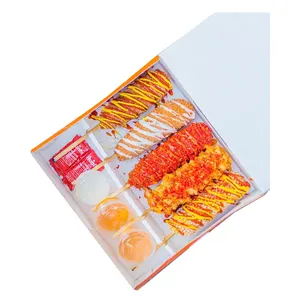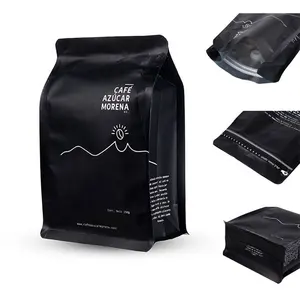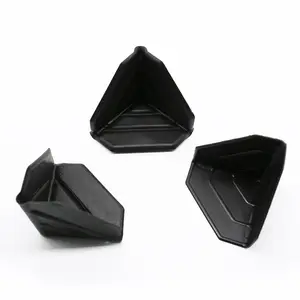Popular in your industry








































































Related Searches:




























Top categories
About hot foil stamping polymer plate
The term hot foil stamping polymer plate is integral to the printing industry, particularly in the realm of offset printing where precision and quality are paramount. These plates are designed for the hot foil stamping process, a method of printing that transfers pre-dried inks or foils onto a surface at high temperatures. The polymer plates are favored for their resilience and ability to produce crisp, detailed images, making them a staple in creating high-quality prints for various applications.
Types and Characteristics of Hot Foil Stamping Polymer Plates
Within the category of hot foil stamping polymer plates, there are several types, each with unique characteristics suited to different printing needs. Some plates are designed for fine text and intricate details, while others are better for broader, less detailed images. The high-quality polymer plates are often preferred for their sharp image reproduction, while the hot sale hot stamping photo-polymer plates are sought after for their cost-effectiveness and versatility. The manual pad printing polymer pad plates cater to specialized printing processes, offering a softer surface that is ideal for transferring images onto irregular shapes and surfaces.
Structure and Operational Components of Polymer Plates
The hot foil stamping polymer plate consists of several layers, each serving a specific function. The top layer is the photopolymer, which contains the image to be printed. Beneath this is a supportive substrate, often made from steel or a magnesium alloy, which gives the plate its rigidity. During operation, the plate is heated, and the raised image area picks up the foil or ink, which is then pressed onto the substrate. The precise engineering of these components ensures a seamless transfer and a high-quality print.
Materials and Properties of Polymer Plates
The materials used in a hot foil stamping polymer plate are selected for their thermal and mechanical properties. The photopolymer layer must be heat-resistant to withstand the stamping process, yet flexible enough to create a clean print. The backing material, often an AZ31 magnesium alloy, is chosen for its strength-to-weight ratio, ensuring that the plate remains flat and stable under the pressure of the stamping machine. These materials work in tandem to provide a durable, long-lasting plate that maintains image fidelity over many impressions.
Business Usages and Applications in Various Industries
The hot foil stamping polymer plate finds its applications across various industries. In the packaging sector, it is used to create attractive designs on boxes and bags that stand out on retail shelves. The publishing industry relies on these plates for the embellishment of book covers and limited-edition prints. In the fashion industry, they are used to stamp intricate patterns onto leather goods, adding perceived value and luxury to the items. Each application leverages the plate's ability to deliver precise and consistent prints, thereby creating significant business value.
Functions and Tasks Performed by Polymer Plates
The primary function of a hot foil stamping polymer plate is to transfer designs onto a substrate using heat and pressure. This process can be used to print serial numbers, expiration dates, or decorative elements. The plates are engineered to perform these tasks with high efficiency and repeatability, which is essential for maintaining brand consistency across products.
Features and Unique Selling Points
Distinct features of the hot foil stamping polymer plate include its ability to produce a clean, sharp image and its compatibility with a wide range of substrates. These plates also feature a shallow relief and fine etch depth control, which are unique selling points that set them apart from competitors. Such precision allows for the production of more detailed and complex designs, which can be a critical factor in a client's choice of printing technology.
Benefits and Positive Outcomes for Users
Using a hot foil stamping polymer plate offers numerous benefits, including cost savings through reduced waste and the need for fewer plate changes. The durability of these plates means they can be used for extended print runs without a loss in print quality. For the user, this translates to higher productivity and lower operational costs.
How to Effectively Use and Maintain Polymer Plates
Effective operation of a hot foil stamping polymer plate involves maintaining the correct temperature and pressure settings. Choosing the right plate requires understanding the specific requirements of the print job, such as the level of detail and the type of substrate. Cleaning the plates after use is crucial to prevent ink or foil buildup, which can affect print quality. Regular maintenance, including inspection for wear and damage, will ensure the longevity of the plates.
Target Audience and Meeting Their Needs
The target audience for hot foil stamping polymer plates includes printing businesses that specialize in high-quality packaging, publishing, and product branding. These plates meet the needs of printers looking for reliability, efficiency, and precision in their printing processes. By providing consistent results and the ability to handle high-volume orders, polymer plates are an indispensable tool for businesses aiming to deliver superior printed products to their clients.
What are the key considerations when installing a hot foil stamping polymer plate?
When installing a hot foil stamping polymer plate, precision is key. The plate must be mounted accurately to ensure that the foil or ink is transferred correctly. It is also important to ensure that the plate is compatible with the stamping machine being used and that the machine is calibrated to the specific requirements of the polymer plate.
How does the hot foil stamping polymer plate contribute to print quality?
The hot foil stamping polymer plate plays a pivotal role in print quality by ensuring that the transfer of foil or ink is precise and consistent. The quality of the plate directly affects the sharpness and clarity of the final printed image, making it a critical component in the production of high-quality printed materials.
What are the environmental impacts of using polymer plates in printing?
The use of hot foil stamping polymer plates in printing has a relatively low environmental impact compared to traditional printing plates. Polymer plates are more durable, reducing the need for frequent replacements. Furthermore, advancements in polymer technology have led to the development of more eco-friendly materials, contributing to a more sustainable printing process.



















